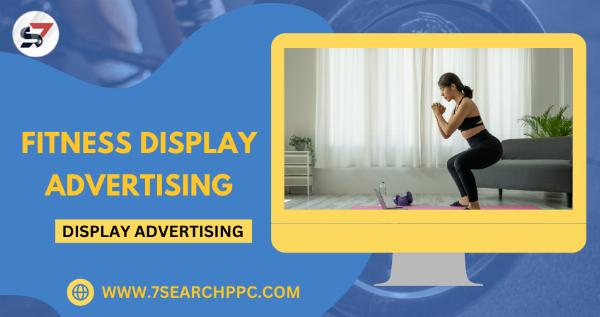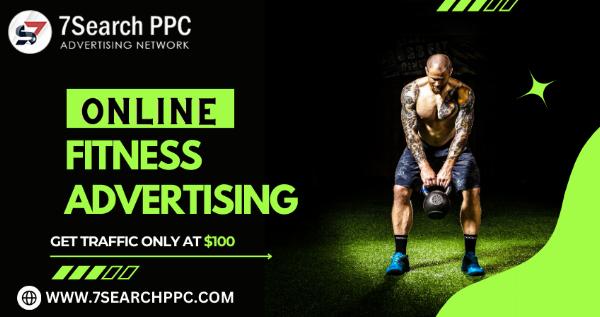6 Positive Health Advertisements That Motivate a Healthier Lifestyle

Strong 8k brings an ultra-HD IPTV experience to your living room and your pocket.
In today’s fast-paced world, maintaining a healthy lifestyle can often take a back seat to busy schedules and daily responsibilities. However, health advertisements play a critical role in motivating people to make healthier choices. Through creative campaigns and powerful messaging, health advertisements not only spread awareness about healthy habits but also inspire lasting change. In this blog, we will explore six examples of effective health advertisements that have motivated people to live healthier lives. Additionally, we'll discuss how these advertisements were developed, their impact, and the role that a health ad network plays in amplifying such messages.
Why Health Advertisements Are Important
The Power of Health Advertisements in Shaping Behavior
Health advertisements are more than just promotional campaigns; they are crucial tools for spreading awareness about public health issues, disease prevention, and healthy lifestyle choices. Well-executed health advertisements can:
- Raise Awareness: They inform the public about specific health conditions, fitness regimes, and healthy lifestyle practices.
- Influence Behavior: Positive health advertisements encourage people to take action, whether it’s adopting healthier eating habits, exercising regularly, or attending routine medical check-ups.
- Foster Long-term Change: When done right, these advertisements can have a lasting impact by inspiring healthier habits and a better quality of life.
How Health Ad Networks Help Spread the Message
A health ad network serves as a platform that connects advertisers with relevant publishers in the health and wellness industry. These networks play a pivotal role in amplifying the reach of health advertisements, ensuring that the right message reaches the right audience at the right time.
Now, let’s take a closer look at six effective health advertisements that have made a significant impact on promoting healthier lifestyles.
Nike’s “Find Your Greatness” Campaign
Promoting Personal Fitness and Self-Improvement
Nike’s “Find Your Greatness” campaign is an iconic example of a health advertisement that goes beyond promoting a product and instead focuses on motivating individuals to pursue personal fitness goals. The campaign emphasizes that greatness is not limited to professional athletes—it’s something everyone can achieve through dedication and perseverance.
Key Elements of the Campaign:
- Inspiring Message: The ad shows everyday people of different ages, shapes, and sizes engaging in physical activities like running, swimming, and cycling, reminding viewers that fitness is accessible to all.
- Positive Reinforcement: By focusing on personal progress rather than perfection, the campaign encourages individuals to embrace physical activity, no matter their starting point.
Impact on Viewers:
The campaign motivated people across the globe to engage in physical activity, regardless of their fitness level. Its message of empowerment and inclusivity resonated with millions, making it one of the most successful health advertisements to date.
Lessons for Health Ad Networks:
This campaign demonstrates how health ad networks can target fitness enthusiasts and those looking to improve their health by connecting them with motivational content that inspires personal change.
The “This Girl Can” Campaign by Sport England
Empowering Women to Get Active
Sport England’s “This Girl Can” campaign was launched to encourage women of all ages, sizes, and fitness levels to participate in sports and physical activities. The advertisement tackles the fear of judgment that often prevents women from engaging in exercise.
Key Elements of the Campaign:
- Body Positivity: The ad features real women of various body types exercising, sweating, and enjoying physical activities without fear of judgment.
- Relatable Imagery: Instead of using professional athletes, the campaign shows everyday women, making it more relatable and approachable for viewers.
Impact on Viewers:
The ad successfully broke down barriers and promoted a message of self-confidence and empowerment. Women across the UK reported feeling more motivated to participate in physical activity after seeing the advertisement.
Lessons for Health Ad Networks:
The “This Girl Can” campaign highlights the importance of inclusivity and relatability in health advertisements. A health ad network can help advertisers reach diverse female audiences who may benefit from messages that encourage body positivity and active lifestyles.
Dove’s “Real Beauty” Campaign
Promoting Mental Health Through Self-Acceptance
Although primarily a beauty brand, Dove’s “Real Beauty” campaign has had a profound impact on mental health by challenging beauty standards and promoting self-acceptance. The advertisement focuses on helping people feel more confident in their own skin, which in turn promotes better mental health and well-being.
Key Elements of the Campaign:
- Challenging Stereotypes: The ad features women of different ethnicities, body shapes, and ages, breaking away from the narrow beauty standards often portrayed in the media.
- Emotional Appeal: The campaign uses real, unfiltered stories of women and their struggles with self-image, fostering emotional connections with the audience.
Impact on Viewers:
Dove’s campaign helped spark conversations about body positivity, mental health, and self-esteem, making it a powerful tool in promoting mental well-being. Women reported feeling more confident and accepting of their bodies after engaging with the advertisement.
Lessons for Health Ad Networks:
By partnering with mental health advocates and influencers, a health ad network can help amplify campaigns like “Real Beauty”, connecting them with audiences who need encouragement to prioritize their mental health.
The Truth Initiative’s Anti-Smoking Campaign
Educating the Public on the Dangers of Smoking
The Truth Initiative is known for its hard-hitting anti-smoking advertisements aimed at reducing tobacco use among teenagers and young adults. These ads focus on the devastating health effects of smoking, as well as the manipulative tactics used by tobacco companies to market their products.
Key Elements of the Campaign:
- Fact-Based Messaging: The campaign presents shocking statistics about smoking-related deaths, diseases, and the unethical practices of the tobacco industry.
- Youth-Centric Approach: The ad targets younger audiences with bold visuals and a straightforward, no-nonsense tone that resonates with teens.
Impact on Viewers:
The Truth Initiative’s campaigns have played a significant role in reducing smoking rates among young people by educating them about the dangers of tobacco. Many viewers were prompted to quit smoking or avoid starting in the first place.
Lessons for Health Ad Networks:
By leveraging the reach of a health ad network, impactful anti-smoking campaigns can target specific demographics, such as teenagers and young adults, and provide them with critical information that influences healthier decisions.
Apple’s “Close Your Rings” Campaign
Encouraging Daily Movement and Activity
Apple’s “Close Your Rings” campaign, integrated with the Apple Watch, motivates users to complete their daily activity goals by “closing” three rings—Move, Exercise, and Stand. This simple yet effective visual representation encourages users to be more active and conscious of their health throughout the day.
Key Elements of the Campaign:
- Gamification: The ad gamifies fitness by turning physical activity into a challenge where users can track their progress and earn rewards.
- Daily Motivation: The ad emphasizes consistent, everyday activity rather than extreme fitness goals, making it more approachable for a broader audience.
Impact on Viewers:
Apple’s campaign has encouraged millions of users to incorporate more movement into their daily routines. By setting manageable goals, the ad helps people make small yet impactful changes to their overall health.
Lessons for Health Ad Networks:
A health ad network can help promote health and fitness apps or devices like the Apple Watch by targeting tech-savvy individuals who are interested in integrating health and technology into their lives.
World Health Organization’s (WHO) “Stay Home, Stay Safe” Campaign
Promoting Public Health During the COVID-19 Pandemic
In response to the global COVID-19 pandemic, the World Health Organization (WHO) launched the “Stay Home, Stay Safe” campaign to encourage people to practice social distancing, wear masks, and follow health guidelines to protect themselves and others.
Key Elements of the Campaign:
- Global Messaging: The campaign was tailored to reach audiences worldwide, offering universal advice on how to stay safe during the pandemic.
- Public Health Focus: The advertisement highlighted the importance of individual actions in safeguarding public health, such as washing hands regularly and avoiding crowded spaces.
Impact on Viewers:
The WHO’s campaign played a crucial role in raising awareness about COVID-19 safety protocols. It helped people understand the importance of following health guidelines to slow the spread of the virus and protect vulnerable populations.
Lessons for Health Ad Networks:
During global health crises, a health ad network can be instrumental in spreading urgent public health messages quickly and effectively, ensuring that critical information reaches as many people as possible.
Conclusion
Health advertisements have the power to inspire positive behavioral changes and improve overall public health. Whether encouraging physical activity, promoting mental well-being, or educating the public on crucial health issues, these ads play an essential role in motivating people to live healthier lives. By leveraging the reach and precision targeting of a health ad network, advertisers can ensure their health-focused messages reach the right audiences. These six examples of health advertisements demonstrate the importance of crafting campaigns that are relatable, inspiring, and focused on fostering long-term health changes.
Frequently Asked Questions (FAQs)
What are health advertisements?
Ans: Health advertisements are promotional messages designed to inform, educate, and motivate the public to adopt healthier lifestyles. They can cover topics such as disease prevention, fitness, mental health, and public health awareness. These ads are often distributed through various media channels like TV, radio, social media, and online platforms.
Why are health advertisements important?
Ans: Health advertisements play a crucial role in raising awareness about important health issues, promoting preventative measures, and encouraging individuals to make healthier lifestyle choices. They help bridge the knowledge gap and provide actionable advice to improve public health and well-being.
How do health ad networks help in promoting health advertisements?
Ans: A health ad network connects advertisers with websites, blogs, and digital platforms that have audiences interested in health and wellness. These networks help target the right audience, ensuring that health advertisements reach people who are likely to engage with the message. This increases the ad’s effectiveness and optimizes the advertiser’s budget.
What role does emotion play in health advertisements?
Ans: Emotion plays a vital role in health advertisements by creating a personal connection with the audience. Ads that evoke empathy, hope, or concern tend to be more memorable and persuasive. By appealing to emotions, health advertisements can motivate people to take immediate and impactful actions.
Note: IndiBlogHub features both user-submitted and editorial content. We do not verify third-party contributions. Read our Disclaimer and Privacy Policyfor details.







